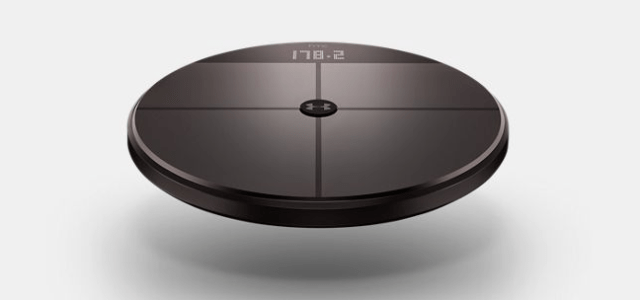
Smart scale goes dumb as Under Armour pulls the plug on connected tech

Any smart device comes with its own set of benefits and trade-offs, but there’s one huge shoe waiting to drop with every single one of them: anything you connect can be disconnected at the other end, and there’s absolutely nothing you the consumer can do about it. Today’s example of smart stuff going dumb comes courtesy of Under Armour, which is effectively rendering its fitness hardware line very expensive paperweights.
The company quietly pulled its UA Record app from both Google Play and Apple’s App Store on New Year’s Eve. In an announcement dated sometime around January 8, Under Armour said that not only has the app been removed from all app stores, but the company is no longer providing customer support or bug fixes for the software, which will completely stop working as of March 31.
Under Armour launched its lineup of connected fitness devices in 2016. The trio of trackers included a wrist-worn activity monitor, a smart scale, and a chest-strap-style heart rate monitor. The scale and wristband retailed at $180 each, with the heart monitor going for $80. Shoppers could buy all three together in a $400 bundle called the UA HealthBox.
Ars’ review at the time noted that none of the components, by itself, was revolutionary, but as a trio they talked to each other reasonably well. The linchpin of the whole operation was, instead, the software: the Under Armour Record app. Record tied all the data from all the hardware together into a comprehensive health, fitness, and wellness journal, allowing a user to see both high-level and granular data about their activity, weight, sleep, heart rate, and other metrics. Record also served as a one-stop shop for adjusting settings on any of the hardware.
In 2017, less than two years after launching the HealthBox line, the company gave up on the project. HealthBox, and the three products comprising it, gradually vanished from both literal and digital store shelves. “I think the market has evolved and we’ve evolved with it,” Under Armour’s chief tech officer said at the time. The company would instead go back to its roots as a clothing line and focus on actual wearables, such as connected running shoes, along with doubling down on the MyFitnessPal app, which it acquired in 2015.
Consumers who had already spent hundreds of dollars on UA’s wearable line, however, could continue using them—until now. The end of the road is nigh, it seems, and all three products are about to meet their doom as Under Armour kills off Record for good. Users are instead expected to switch to MapMyFitness, which Under Armour bills as “an even better tracking experience.” The company also set the UA Record Twitter account to private, effectively taking it offline to anyone except the 133 accounts it follows.
Record, however, aggregated and presented more data to users than MapMyFitness does. Under Armour writes in its FAQ to its customers:
Is there any data from Record that is not available in MapMyFitness?
Yes—Steps, Sleep, Weight, How Do You Feel?, Resting Heart Rate, and Simple Nutrition data will not be available in MapMy. Additionally, body fat percentage goals and graphs and some of your UA Record profile fields will not transfer to MapMy.
Current device owners also can’t export all their data. While workout data can be exported and transferred to some other tracking app, Record users cannot capture weight or other historical data to carry forward with them.
A reader tells Ars that Under Armour did not provide any notification of Record’s demise to customers who were using the app, basically springing the sunset date on them as a silent surprise.
The story of Under Armour’s doomed scale is, unfortunately, something of an endemic side-effect to the Internet of things era. Not only can a company choose to pull support for a product that needs to phone home at any time, but also companies get acquired and go bankrupt all the time.
When this pattern plagues something small and inexpensive like a smart lightbulb, the disconnection is annoying but comparatively low-stakes. But when it’s something like a $300 smart-home hub, or $1,200 worth of home security products, consumers who invested a fair amount of cash into something are suddenly up a creek.




